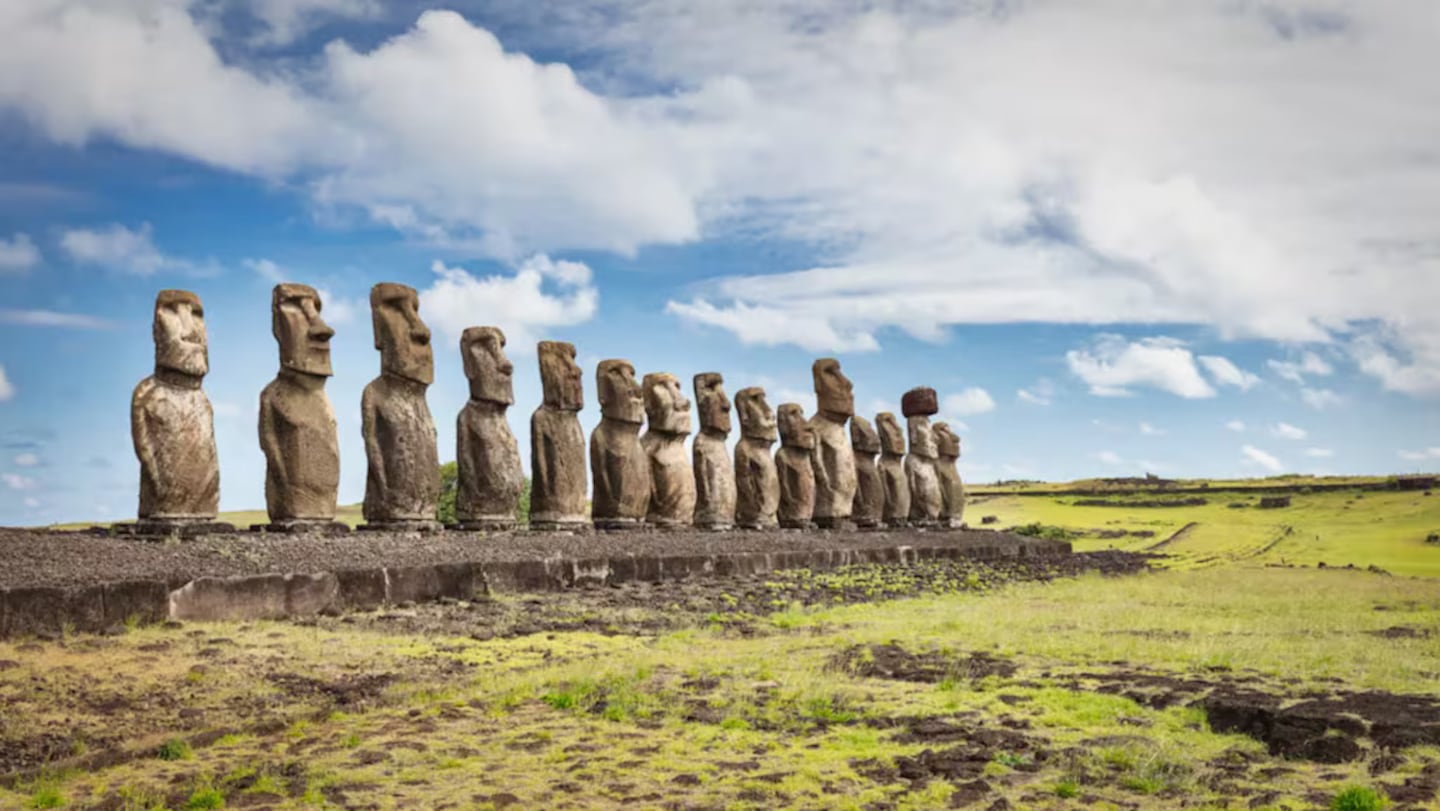This article was first published by RNZ.
New clues found on Easter Island Rapa Nui challenge the idea warfare and stripped resources led to a cataclysmic population crash, and instead demonstrate rich traditional knowledge.
Rapa Nui is often used as an example of how overexploitation of limited natural resources can result in a collapse of society.
But new work from the Columbia Centre for Archaeology and the Columbia Centre for Climate is among the evidence now challenging the long-held idea that islanders chopped down palm trees at an unsustainable rate leading to an ‘ecocide’.
Dr Dylan S Davis took part in the research and told Saturday Morning about what has been found.
Why did archaeologists believe there had been a population collapse?
When Europeans began visiting the remote Pacific Island in the 18th century they found just a couple of thousand people living there, Davis said.
“But you also have an island that’s mostly devoid of trees. Lots of rocks that are all over the place, and ... these massive statues, some of which are falling into disrepair.
“They... looked at this and said: ‘well it must have required tonnes and tonnes of people to build these things and [the population] must have been a lot bigger than what we’re witnessing now’.”
It was thought drastic deforestation led to a lack of resources, warfare and a crash in the population.
Why are those ideas now in doubt?
Unlike other Pacific Islands, evidence of defensive structures and fortifications have never been found on Easter Island.
And archaeologists now believe the statues could have been built by much smaller populations, using co-operative strategies.
“The total population probably wasn’t much bigger than when the Europeans first arrived,” Davis said.
How many people did live on Rapa Nui?
Davis’ own study looked at how many people the island could have supported and what growing practices could have yielded.
Rapa Nui is an old volcanic island, which means that over time the elements have scoured away much of the fertile elements in the soil, making it difficult to grow food there.
But structures and evidence from human remains show that while about half of the islanders’ diet was from kai moana, the rest was from crops. And the people of Rapa Nui used a technique called rock gardening, or ‘lithic mulching’, mixing ground rocks into soils to enrich and stabilise them for growing food.
Rock gardens help soil to hold moisture and have such a long-lasting effect, that places where rock gardens were built can now be identified with new technology - short wave infrared satellite imagery of the landscape, especially when this data is combined with new computing techniques.
“This technology could distinguish between natural rocks and things like lava flows that are on this island. compared to the man-made rock gardens that are often on the landscape,” Davis said.
“One of the primary things that people were going to be growing in these was sweet potato and other tubers like taro, and banana and sugar cane.”
Previous estimates for how much of the island was used for growing crops ranged from 2 percent up to half of the island’s surface, supporting the idea the population had once been much larger, with one estimate that there could have been as many as 17,000 people living there.
But Davis’ new data provides strong evidence only about 1 percent of the island was covered by the rock gardens: “Which is substantially less than all of these prior assumptions.”
That means only up to about 4000 people could have been sustained on Rapa Nui, he said.
“The reason this is so important, going back to this idea of ecocide and population collapse is that the initial estimates from European observation in the 18th century that about 3000 to 4000 people were living there at the time.
“So if the idea is that this is the remnants of what used to be a much bigger population then we would expect that the total population at the time was much smaller than the total [agricultural] carrying capacity.
“But what we actually find is that the total population find is about what we find in this study ... suggesting that at that time Europeans first observed the Rapa Nui people on the island they were probably living within their means at that carrying capacity.”
What happened to the trees?
“We do have evidence that there was once a big palm tree forest that used to be present on the island, that is now since gone - so we do have evidence that there was a lot of vegetation cover and slowly and surely over the course of several hundred years the trees get cut down or they just aren’t replenishing,” Davis said.
One common theory was that the trees were cut down to use them to move the moai statues around the island.
“You have this mix of a colonial mindset, this Western perspective, that ... ‘well there used to be trees here and now there’s not, and we see this population living in this landscape that doesn’t look like a traditional agricultural system so clearly something must have happened’.
“But what some recent research is also suggesting is there were also large rat populations that would have come over with the Polynesians that originally settled the island and what the rats would often eat are the seeds of these trees.”
Davis says Polynesian settlers may have cut down the vegetation at a rate that was traditionally sustainable elsewhere, but on Rapa Nui the forests didn’t replenish “because all the seeds that were deposited were being chewed up” by the rats.
- RNZ


